At the end of the AMD to Acquire Xilinx Continuing Consolidation article this week, I noted that Marvell needed a dance partner in the discussion. A passage in that article read “The big question is if I drive down 237 to Marvell’s campus today whether they have a big “Open house” or “For sale” or “Buying semis” sign off the freeway.” The next day we heard a leak about a deal that was confirmed shortly thereafter that Marvell reached a deal to purchase Inphi. This deal fits in the broader narrative of chip deals, and I wanted to take a moment to discuss why.
Talking AMD-Xilinx and Marvell-Inphi
We also have a video discussing both the AMD-Xilinx and Marvell-Inphi deals that were announced this week, and why they have a key theme.
Our suggestion, since that is a lot of discussions rather than showing products, is to open the video on YouTube and listen along.
Marvell and Inphi Background
Marvell for its part makes a number of connectivity options. These range from PHYs, to NICs that go anywhere from desktops to servers and specialized communication equipment. Marvell also has a line of switches for the data center and edge.
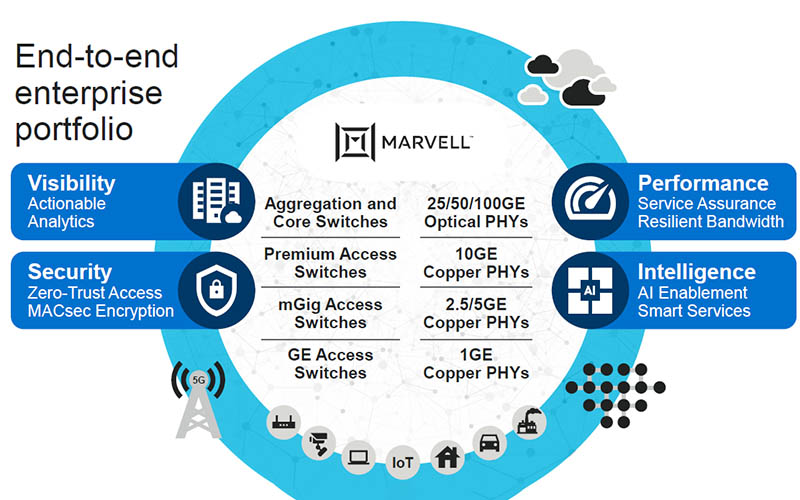
Marvell also makes processors that sit in 5G infrastructure that you can learn more about in our New Marvell OCTEON TX2 and Fusion CNF95xx 5G SoCs article.
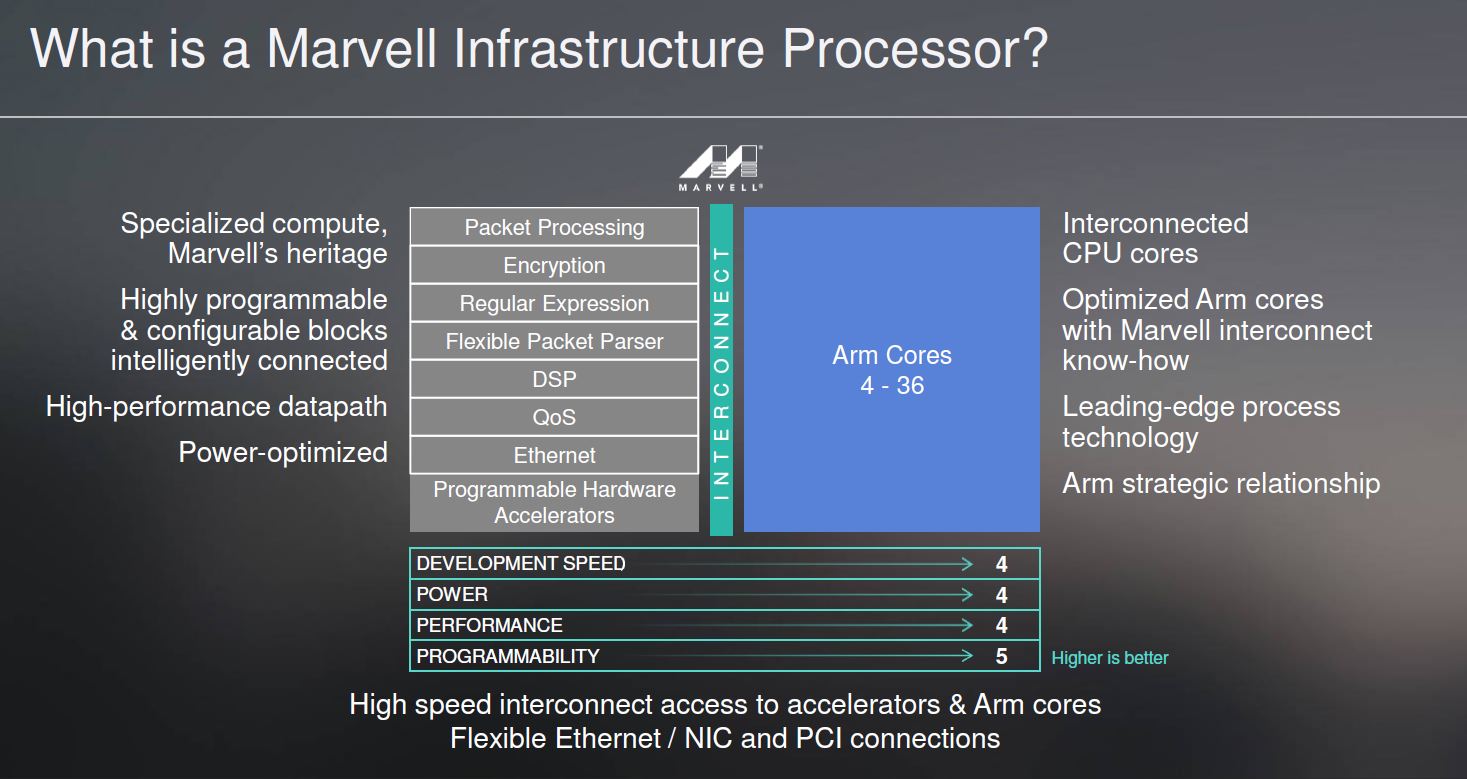
There are other parts of the business at Marvell, but a key theme in the company’s direction is connectivity. While companies like Intel are focused on building the best processors, Marvell is working on next-gen disaggregated data center connectivity even in seemingly unrelated parts of their business. As a good example, Marvell and Kioxia Ethernet SSD solutions are now sampling.
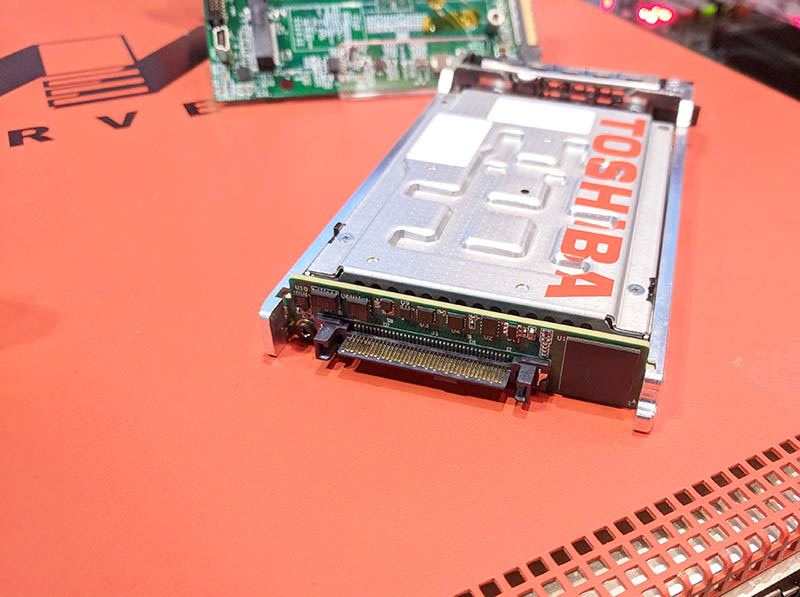
While Marvell has some traditional controller businesses and other areas, we are increasingly seeing the company focus on connectivity. That brings us to the Marvell-Inphi deal.
Inphi generally makes products designed for the optical networking space with products such as DSPs, transceivers, and drivers.
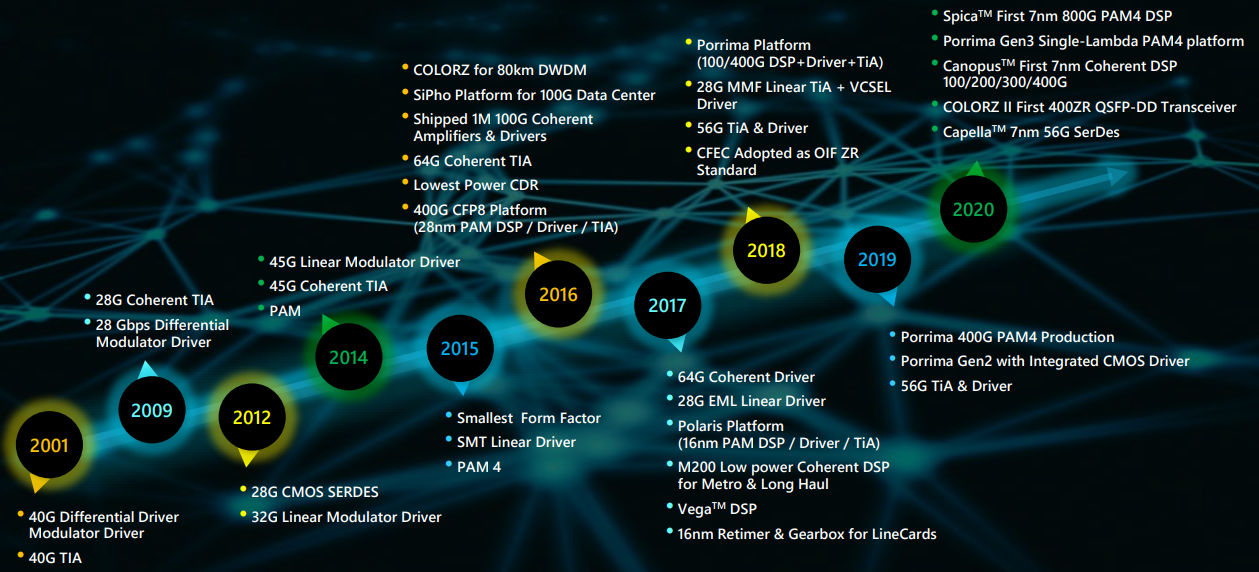
While the company may not be a household name, it is better known in the infrastructure markets, specifically on the networking side.
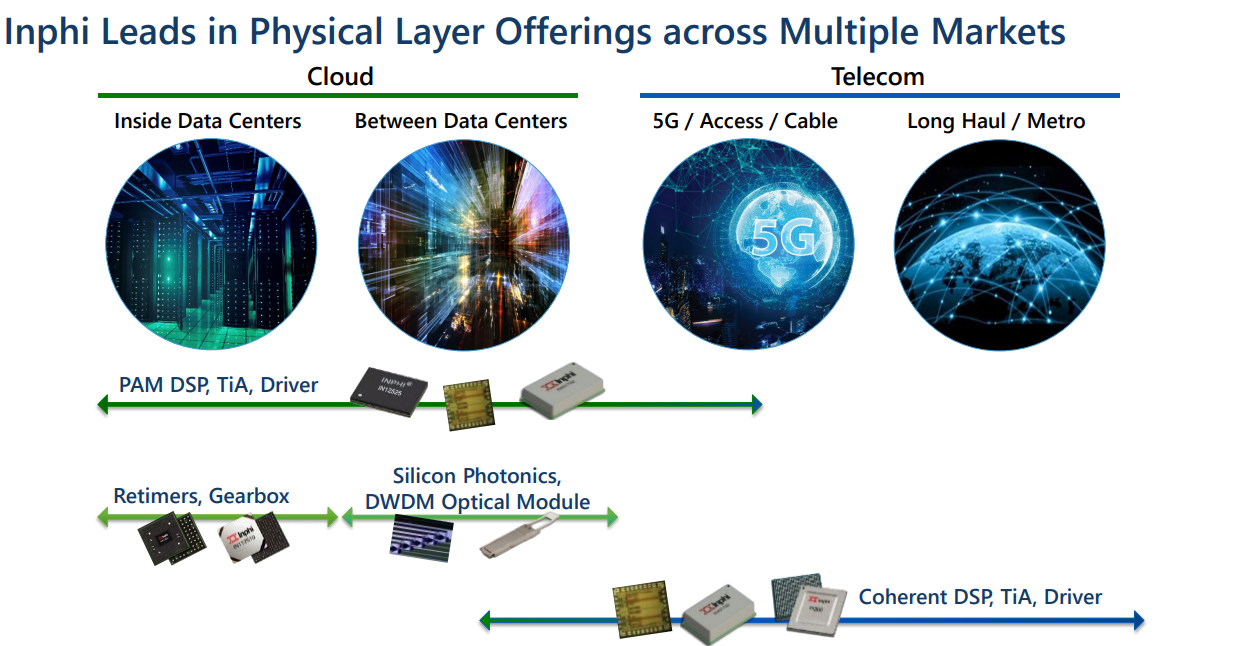
In short, Inphi makes a lot of the products you need a stable of PhDs to design and yet are often taken for granted outside of the networking space.
Marvell-Inphi Rationale
In the network switching space, as well as some of the 5G edge deployment areas, there is an enormous demand for next-gen and higher-speed data fabrics. As speeds double, power consumption also rises which creates practical packaging challenges. Earlier this year, we did a piece just before lockdown (2 days prior in the Silicon Valley) on Hands-on with the Intel Co-Packaged Optics and Silicon Photonics Switch. In that video we go into the challenges of next-gen networks, and what Intel is doing with their Barefoot acquisition as well as their silicon photonics business.
Marvell has switch chips and many parts of the infrastructure market. As the company is looking ahead to the future demand, it needed a story around optical transport. Inphi effectively gives Marvell this story through a well-regarded company that has many of the components Marvell will need to integrate into next-generation assemblies.
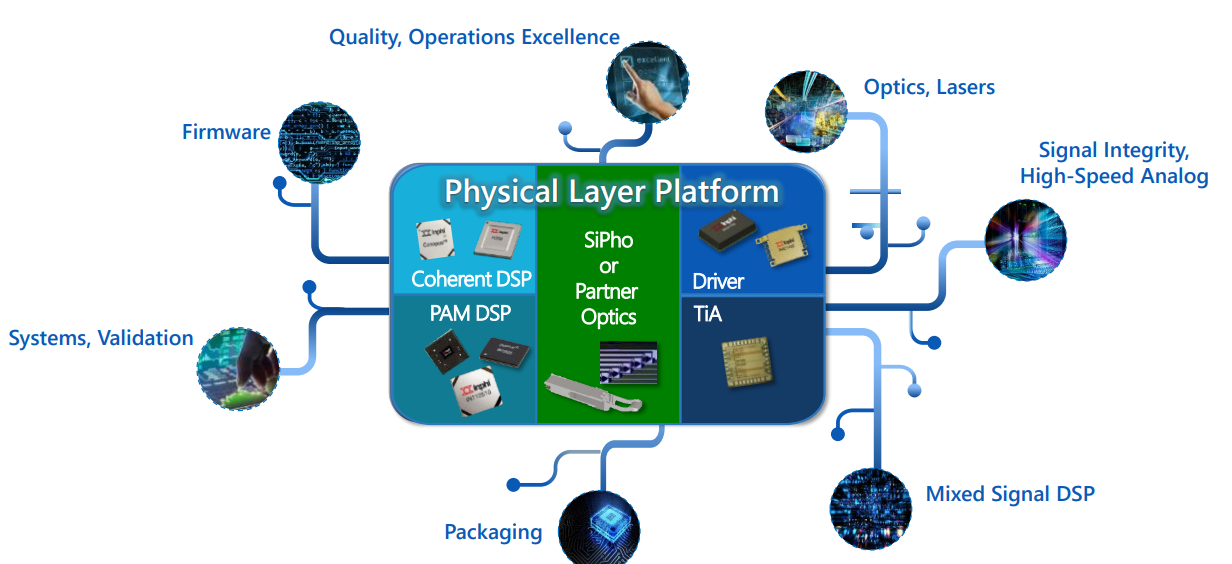
The key markets are telecom and infrastructure as well as cloud providers. Inside a cloud data center, optical runs can easily reach 1-2km before even getting outside the walls of the facility. As speeds rise, even the shorter in-rack runs will become challenging if not practically impossible to service with copper DACs. The industry knows we are moving to more optics.
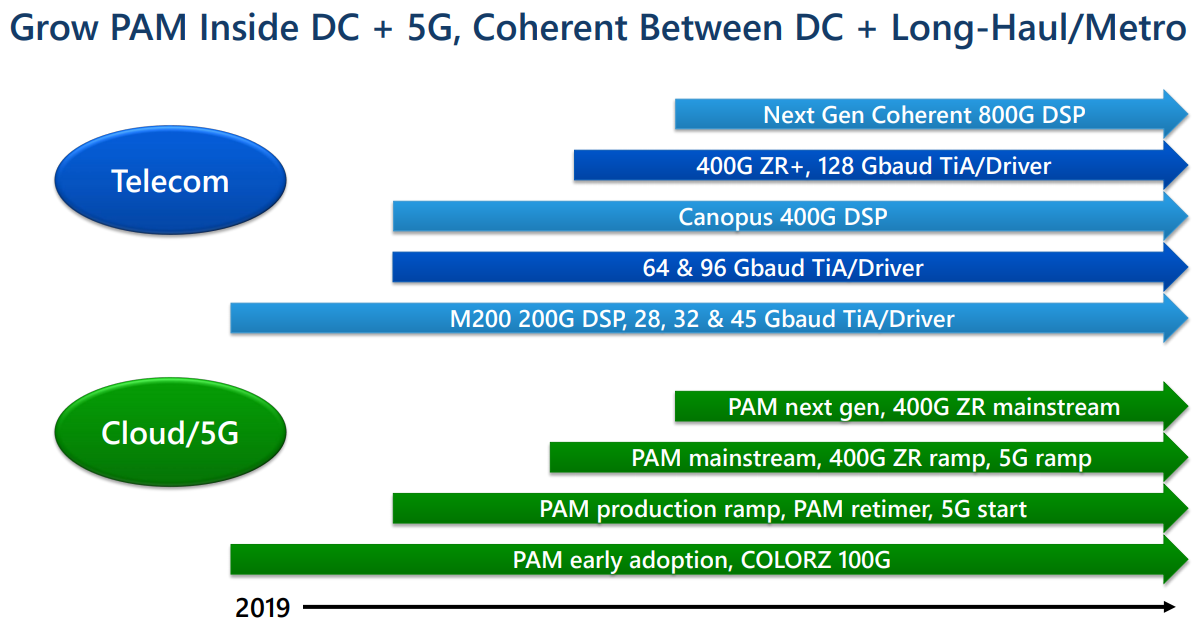
Going beyond the obvious network connectivity, there is another layer to the discussion. We know that current PCB signaling hit a major hurdle with the PCIe Gen4 era. We showed off the future of servers as requiring many cables to do what PCB runs previously did simply due to better signal integrity.
Like the network side, companies are in research phases now of what future chip-to-chip connectivity looks like. This has been promised for years, but the next speed jumps are going to turn optical connectivity from a “nice to have” to a requirement in future generations. I asked Intel’s chief architect about this at Intel Architecture Day 2020 and he told me, not commenting on specific products, we would need to see this start to be implemented by 2025.
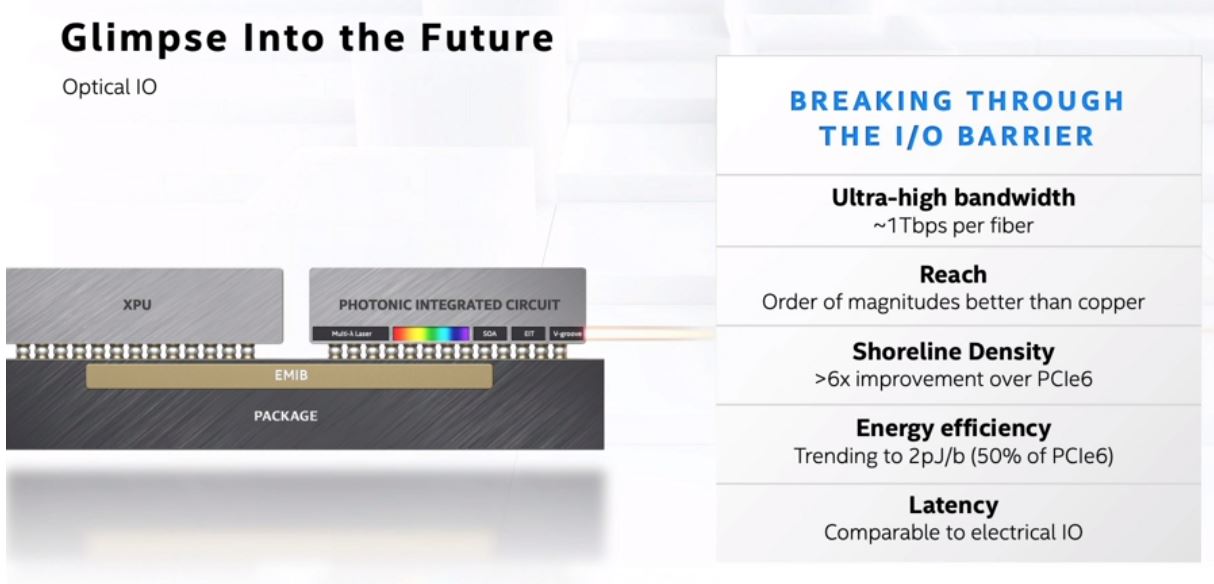
While long haul networking is always exciting, optics are moving into even shorter runs within racks, but also even to within servers. Moving to optical engines within chips means we can get connectivity for disaggregated computing in the CXL 2.0 era or just beyond.
Final Words
While at first the AMD-Xilinx and Marvell-Inphi deals may seem completely different, they share at least three key themes.
- They are focused on scaling semiconductor companies
- Target markets are data center and 5G deployments
- They have strong connectivity stories
While some may question why Inphi versus other options, at some point there are only so many companies out there that Marvell could purchase and Inphi adds what is mostly a net-new product portfolio where the Inphi solutions are often designed to operate next to existing and future Marvell products.
As Marvell transforms its business to making customized solutions for key customers in the data center and 5G edge markets, there is one fact it can be sure of: all of these customers will use optical networking, and all of them can potentially use Inphi products as well. Looking further ahead, Marvell needed an optics story for their chip business so this move makes sense.

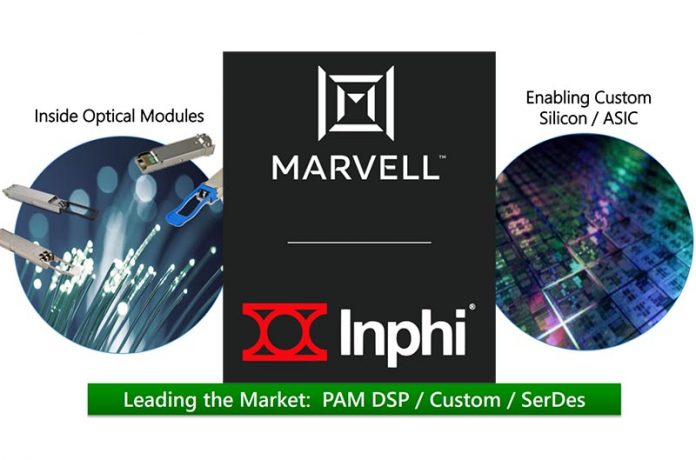



“needing a dance partner in the concussion”? Huh? Usually it’s better to seek a doctor than a dance partner when having head trauma. Is that perhaps some regional figure of speech, or just an instance of rebellious auto-correct?
I think I have two rebellious add-ons plus Chrome fighting over auto-corrections. Need to get down to one.
Great analysis as usual! Also with the AMD Xilinx deal, every other tech news site was scratching their heads not knowing how to judge this; Only your analysis and later S|A’s made things click.
Kudos!
Typo not trauma indeed but absolutely do not nurse any concussion at home and keep it in your active top of to do items to keep checking no strangeness develops. Any brain trauma risks infections and I was unfortunate enough to get a Candida Albicans blood brain crossover infection. Yep that’s the thrush gentlemen. Not very high on many men’s checklists for moments feeling dizzy. This has profoundly affected my life. It developed unrecognised and unchecked (wrong side of the blood brain barrier apparently the sneaky evil thing) until I began loosing my vocabulary until friends reportedly major speech and language I simplification and to this very day I frequently am not aware of the extent of “brain fade” I call it but it ranges from total incapacity to recall common idioms to real mental voids and I am only aware of this happening when I trip over myself in a often most embarrassing muddled confusion of overkill efforts to counterbalance what appears to others to be my being dumbstruck only inside I’m racing on the spot going quite loopy and intense. I’m thankfully not conscious of it on real time but I believe that I become rather disturbed by a locked in feeling which I’ve experienced in mild ways at other times but which is entirely perturbing enough.
Bottom line please take care of your head, it’s been five years just to regain the command of professional conversation I will never know if it’s as effective as I was because listening to tapes dictation interviews presentations… I only know I’m still me because I’m pretty sure nobody could impersonate the oddity I have erratically become. I’m lucky I don’t always display symptoms but watching over my own shoulder is exhausting and can leave me irritable. I enjoy the funny side of it as well because the involuntary episodic nature looms it in my imagination to tourette syndrome and I imagine instead of profanity a torettes sufferer exploding with profane cloud architecture technicalia a friend teased ought to be a stand up show about enterprise sales in case my career gets any worse hit. I figure we still have Ellison for enterprise stand-up tho..
Original thought :
I would love to see anything from the world of physical assistance equipment for loading out racks and carting especially now very varied chassis depths I think each time I see one are begging to receive a real fresh thought process
Reflecting on this accompanying the thought with front of mind concern for injury – and I’m certain I’ve seen more head knocks than back strains- I’m truly disappointed with the apparent non consideration for the comparatively fragile humans moving in the immediately adjacent space to some very heavy new server designs. Computer people are invariably brilliant at using tools to make work less onerous so we can perform better than ever with our full attention on our tasks. But come to lumpy sheet steel boxes of components we seem rather at a loss for ideas. You can tell I’ve been saving on remote hands.. But the cost of those remote hands when needed must surely be strongly influenced by workplace accident insurance and if the assistive tools don’t exist and aren’t available, that must literally divide the ratebif work by whole integers?